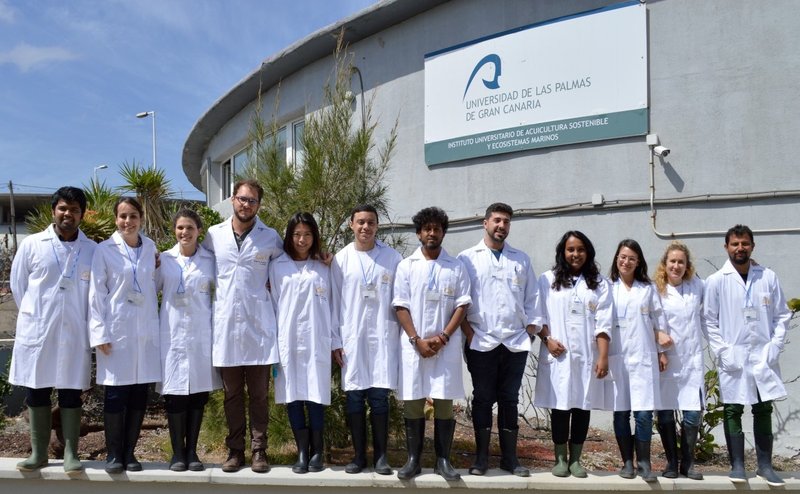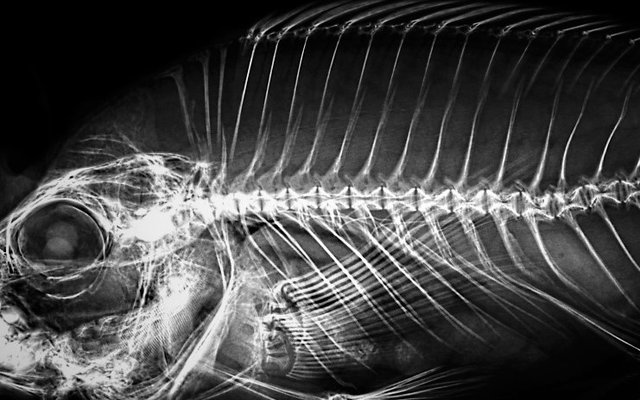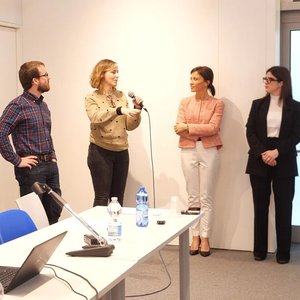In gilthead seabream (Sparus aurata), the prevalence of skeletal anomalies can reach up to 100% of the fish (Boglione et al., 2001). In the wild, these fish tend to not survive due to their poorer swimming capacities, whereas in farms, the lack of predators and access to feed means that they can make it until the final stages of the production cycle. However, these fish perform worse than those free of skeletal anomalies and are rejected by the consumer due to their appearance. This causes significant losses to the producers since they must invest in feeding them, dedicate manpower to discard them, and damage the public image of the industry.
Skeletal anomalies tend to appear more often in the early developmental stages when fish are starting to develop their skeleton. These anomalies are caused by genetic and environmental factors, and among the latter, nutrition plays an essential role. The skeleton is composed of cartilage and bones, and the inorganic matrix of the bone is mostly made of minerals (mainly calcium and phosphorus), but other minerals, including copper (Cu), manganese (Mn), selenium (Se) and zinc (Zn) play pivotal roles in the skeletal health. Therefore, a deficiency of any one of these minerals causes alterations in the structure of the bone, which can ultimately lead to anomalies. Some vitamins are also involved in the development of bone, including vitamins D and K, which are related to the absorption and regulation of calcium.
Researchers from the Aquaculture Research Group from the University of Las Palmas de Gran Canaria conducted a total of seven trials in larvae and three in juveniles to study the effects of varying levels of copper, manganese, selenium and zinc, as well as vitamin D and vitamin K on the growth and skeletal health of gilthead seabream.

Researchers from the Aquaculture Research Group from the University of Las Palmas de Gran Canaria
Microminerals
A series of studies were conducted on gilthead seabream larvae and juveniles to determine the optimal levels of dietary supplementation for various essential trace minerals.
Copper (Cu) supplementation in diet did not significantly affect seabream larvae growth performance. However, Cu supplementation reduced lipid peroxidation and skeletal anomalies and raised whole-body contents in DHA, EPA and n-3 PUFA. The optimum dietary Cu levels for seabream larvae were suggested to be 21.5-22.6 mg/kg.
Zinc (Zn) supplementation improved larval growth, promoted bone mineralization, and reduced lipid peroxidation and skeletal anomalies. However, non-supplemented diets and the highest levels of dietary Zn negatively affected the larvae.
Manganese (Mn) levels did not significantly affect survival or mortality in larvae, but fish fed with a non-supplemented diet caused growth reduction, low Mn content in the whole body, and increased skeletal anomalies. Higher dietary Mn levels did not show signs of toxicity and improved mineralization and reduced anomalies.
Selenium (Se) levels did not affect the growth and survival rate of seabream larvae, but non-supplemented diets caused an increase in lipid peroxidation, reduced antioxidant gene expression and essential fatty acids content, and higher incidences of skeletal anomalies. Adequate Se levels up-regulated antioxidant genes, increase in whole body DHA, EPA, n-3 PUFA, reduced lipid peroxidation, and reduced anomalies in gilthead seabream larvae.
Zinc for juveniles did not cause a significant impact on various growth parameters studied, skeletal anomalies, or bone biomarker gene expression in fish. However, a higher Zn level tended to increase total skeletal anomalies. Overall, the study suggests that a non-supplemented diet is sufficient for growth and bone health in juvenile fish.
In summary, these trials suggest the importance of optimal levels of copper, zinc, manganese, and selenium supplementation in the diet for enhancing growth, maintaining bone health, and protecting against oxidative damage in gilthead seabream larvae and juveniles.
Vitamin D and vitamin K
These studies investigated the effects of varying levels of vitamin D and vitamin K on the growth and skeletal health of gilthead seabream larvae and juveniles.
The findings suggest that excessive levels of these vitamins can have negative effects, including increased skeletal anomalies and mortality rates. The studies recommended an optimal dietary range of vitamin D and vitamin K to promote larval survival, calcium uptake, vertebral mineralization, and reduce the incidence of skeletal anomalies. Moreover, the studies found that a combination of vitamin D and K at certain levels led to the highest larval growth and survival in larvae, as well as the upregulation of important biomarkers related to bone health. However, an excess of these vitamins led to reduced growth and survival, as well as downregulation of bone biomarker gene expression. Additionally, the studies investigated the interaction between dietary vitamin D and vitamin K in selected genes related to bone metabolism, calcium regulation, or immune system in gilthead seabream juveniles. The optimal dietary range for vitamin D and vitamin K was found to promote bone health and immune function, and excess levels led to negative effects on bone and calcium metabolism-related genes in vertebrae.
References
Boglione, C., Gagliardi, F., & Scardi, M. (2001). Skeletal descriptors and quality assessment in larvae and post-larvae of wild-caught and hatchery-reared gilthead sea bream (Sparus aurata L. 1758). Aquaculture, 192, 1–22.
Sivagurunathan, U., Dominguez, D., Tseng, Y., Mert, K., Roo, J., Boglione, C., Jesu, P. A., & Izquierdo, M. (2022). Effects of dietary vitamin D3 levels on survival, mineralization, and skeletal development of gilthead seabream (Sparus aurata) larvae. Aquaculture, 560 (January), 738505. https://doi.org/10.1016/j.aquaculture.2022.738505
Tseng, Y., Eryalçın, K. M., Sivagurunathan, U., Domínguez, D., Hernández-Cruz, C. M., Boglione, C., Philip, A. J. P., & Izquierdo, M. (2023). Effects of the dietary supplementation of copper on growth, oxidative stress, fatty acid profile and skeletal development in gilthead seabream (Sparus aurata) larvae. Aquaculture, 568. https://doi.org/10.1016/j.aquaculture.2023.739319













